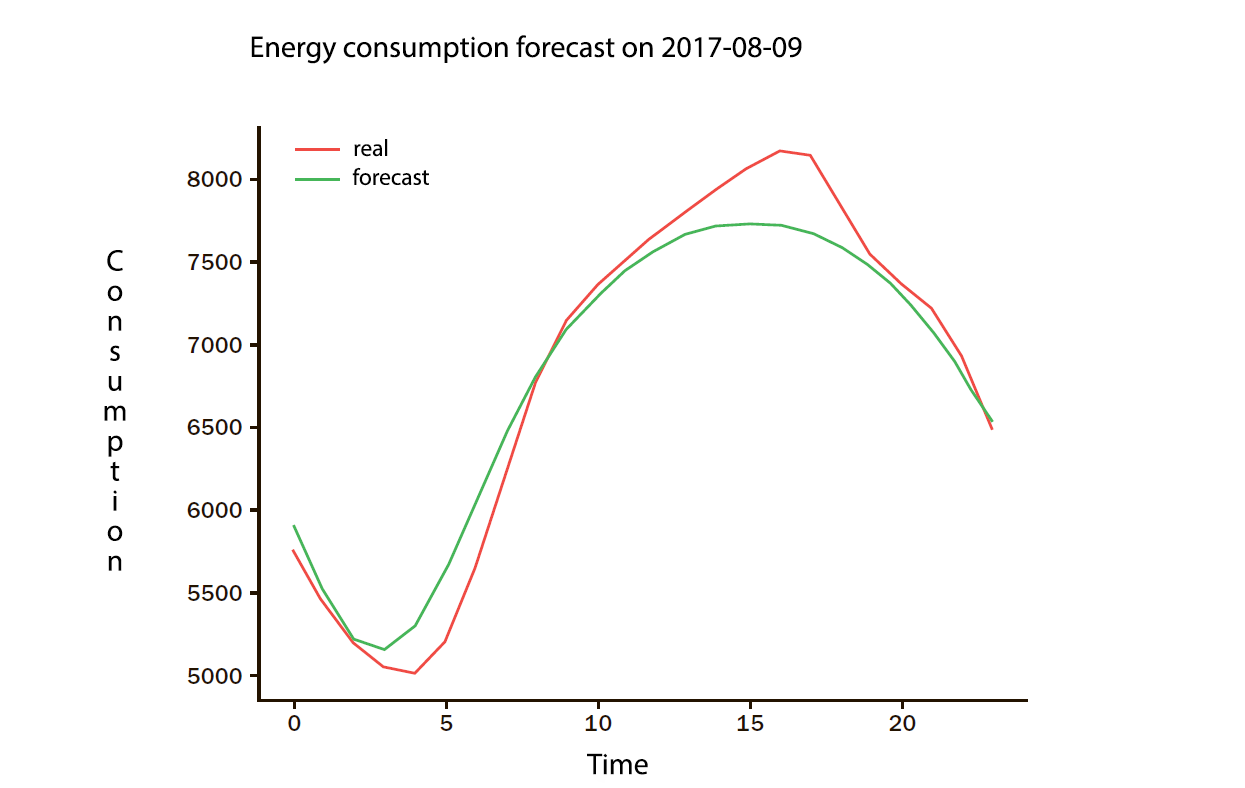Market place: Energy companies network
Project: Building and testing of the conceptual model for prediction of the electricity consumption
Goal: obtaining a short-term forecast of energy consumption for the procurement department to plan the purchase volume at the Ukrainian Energy Exchange.
Tasks:
- Build the test model of forecasting of electricity consumption using a machine learning system based on data collected by the customer on records points.
- Determine the sources and details of additional data/data from external sources that can positively affect prediction accuracy (customer data, accidents, weather forecast, etc.).
- Determine the optimal depth and discreteness of the collected data.
- Determine the required architecture of software and hardware for the forecasting system as well as necessary subsystems to ensure the success of the company from the energy market.
Fulfillment: To achieve the goal of the project, it is necessary to develop and implement a unified system for recording and forecasting of electricity consumption, to ensure correct according to the volume of daily purchases on the energy exchange. AM-BITS offers the development and implementation of a platform for data collection and processing with a prediction subsystem based on machine learning and predictive modeling.
Result: As part of the task of predicting electricity of consumption, we learned the possibility of using machine learning. After analyzing algorithms and advanced research in the field of machine learning for short-term forecasting of events in relation to the timeline, the Recurrent neural networks (RNN) were chosen.
Recurrent neural networks – a type of neural networks where connections between elements form a directed sequence. This makes it possible to process a series of events in time or consecutive spatial chains.
In order to test the RNN, we have taken open data about hourly electricity consumption from New York City and temperature changes during the proper period. The pool of available data is more than 1 year, but during R&D, we managed to get good results of prediction of consumption for 2 days ahead using a 3-month interval of historical data.
On the chart below, the red line represents actual electricity consumption by 2017-08-09, the green one shows the consumption forecast for the same day. The forecasting model was based on the absence of data on real consumption on the previous day.

The constructed model allows us to obtain a forecast of electricity consumption for the New York City for 2 days ahead, with the error between 0.5 and 3.6% of real data, using data for training, containing information about air temperature and real energy consumption with discreteness 1 an hour, the depth of three months.

